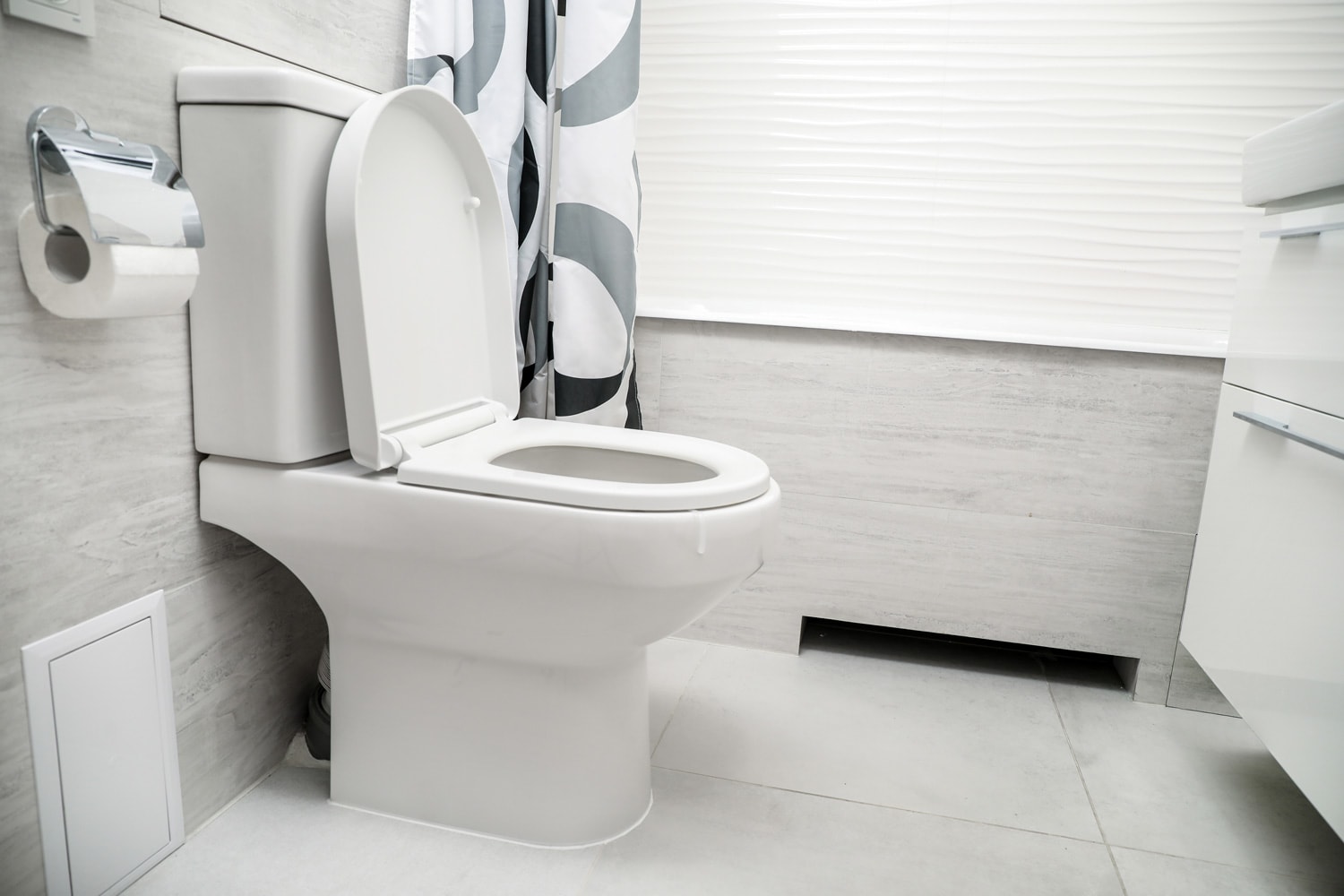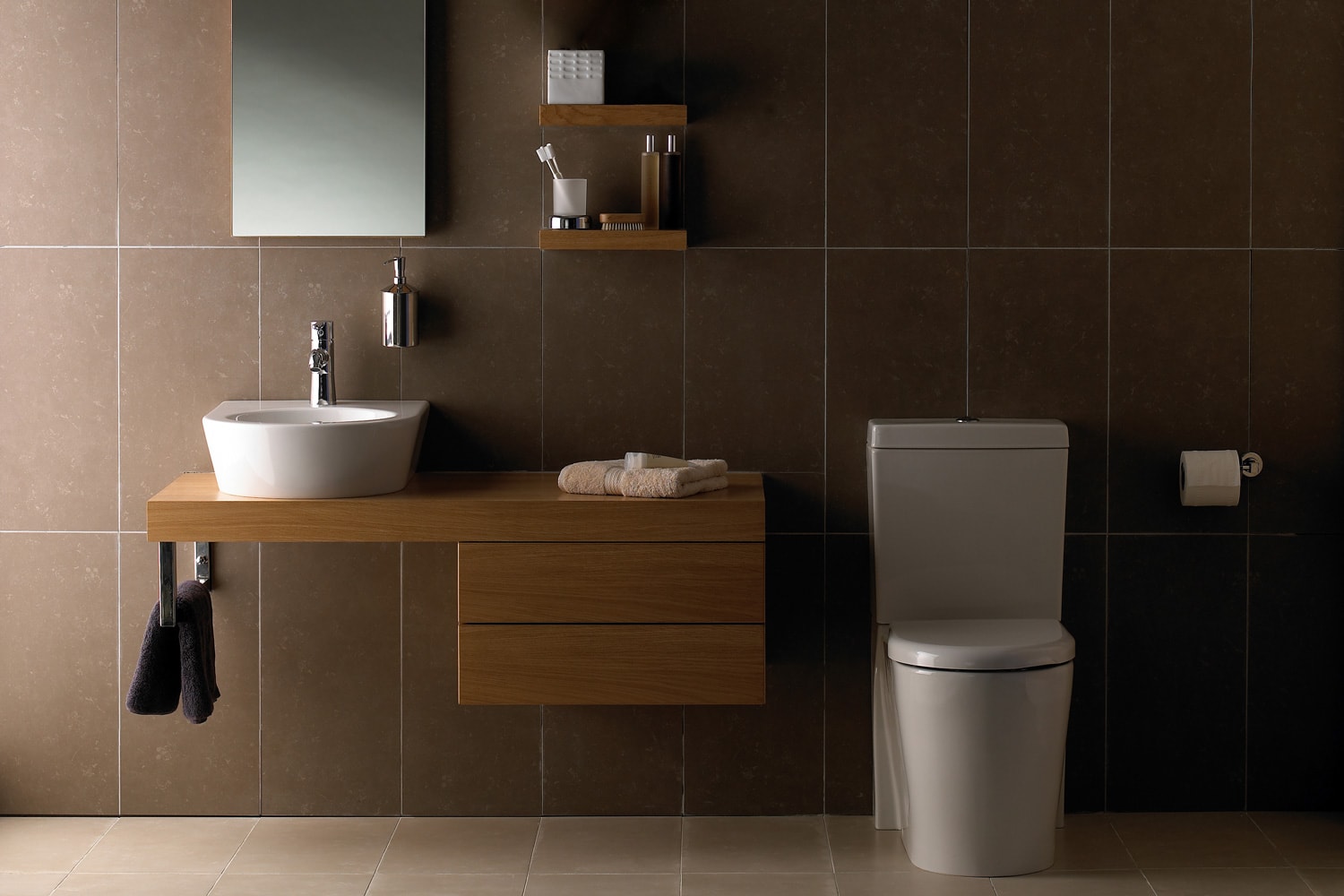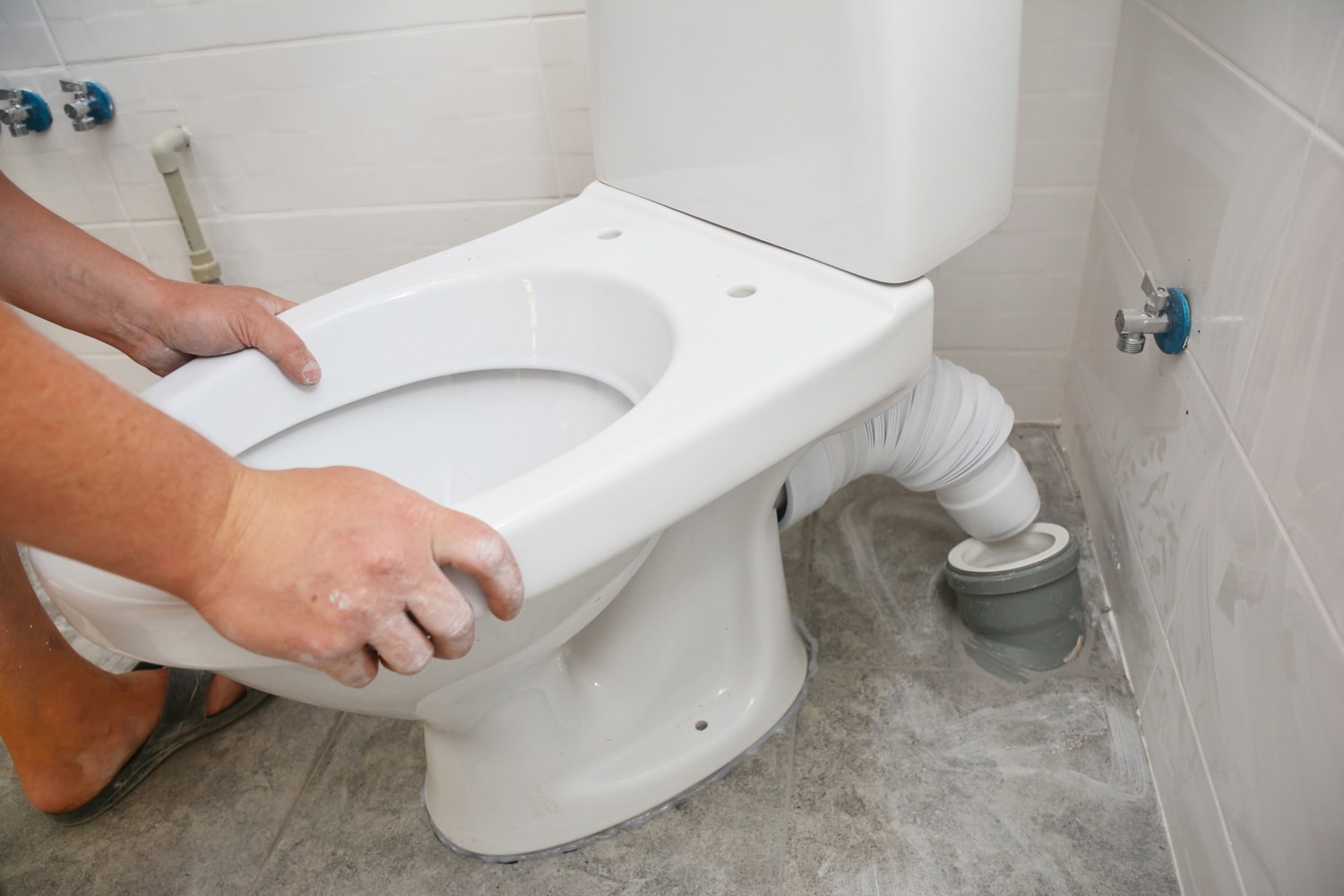- First, wear gloves to protect your hands and a mask to avoid inhaling the dirt.
- Get the flange and fit it into the drainpipe.
- Screw the flange against the floor using a screwdriver and the screws provided in the package.
- Apply a sealant around the flange to avoid leakage.
- Finish installing the toilet. There are bolts that you just need to tighten to hold the toilet in place.
In this article, we'll figure out if the toilet flange should go inside or outside the pipe. We'll walk you through the steps of installing the flange and explain what it's for. There's no reason to waste time. Let's continue reading!

Does Toilet Flange Go Inside Pipe Or Outside?

A toilet flange is often made of PVC plastic with a metal plate around it for screwing it in place. It comes in the shape of a hollow tube, which is good for fitting in with a drainpipe. The flange is basically what connects the toilet bowl and the drainpipe. Without the flange, the toilet waste will leak around the bathroom.
Toilet Flange Vs. Drain Strainer
As a quick comparison, a flange helps prevent leakage of toilet waste. On the other hand, a drain strainer helps filter out solid waste coming down the drainpipe. The drain strainer is often made of stainless steel and is used on exposed drainpipes such as floor drains or sinks. You don't need to use a strainer on the toilet drain.
What Size Should the Flange Be?
Generally, the flange should be 4x3 inches and have a depth of at least three inches. This size of flange is good at redirecting the wastewater into the drainage system.
Signs the Toilet Flange Needs Replacement

A toilet flange is directly below the toilet bowl. So, it's quite hard to see if the flange is leaking or if the floor is wet from another source. That's why it's significant to identify if the flange needs replacement. Check below some possible signs.
Loose Toilet Bowl
This is probably the most obvious sign of a faulty flange. A loose toilet bowl means that the bolts holding the toilet stable are loose. You can try to tighten such bolts to prevent the toilet bowl from shaking a bit. Otherwise, you might need to replace the flange to enhance stability.
Water Pooling on the Bathroom Floor
If you notice that the toilet's bottom is frequently leaking water, then it's possible that the flange is broken. Check if there's water coming out every time you push the toilet down. The residual wastewater may seep out at the toilet's bottom, indicating a leak beneath the toilet bowl.
As an initial solution to this issue, you can follow the steps below:
- Use a dry mop to absorb the water.
- Allow the floor to get dry.
- Take a picture of the bathroom after you mop the floor.
- Restrict from using the bathroom for at least an hour.
- After an hour, go back to the bathroom to see if there's still water pooling around the toilet.
- If the water seeps out around the toilet, then the flange is possibly leaking. Otherwise, the floor is just wet. You can try to replace the flange if the same issue occurs on the other days.
Smelly Bathroom Floor
The bathroom in general is prone to less than pleasant aromas. However, these odors shouldn't last long when regularly cleaning and ventilating your bathroom.
A broken flange can let in unpleasant smells from the sewer. Even a small gap between the flange and the toilet bowl can be enough for a bad smell to spread throughout the bathroom area.
But before you replace the flange, consider doing the steps below:
- Wear a mask and gloves.
- Clean the bathroom floor with soap, water, and a bathroom cleaning solution. Using bleach is helpful, but optional.
- Scrub the floor with a bristled sponge.
- Add more cleaning solution until the floor becomes odorless and clean.
- Splash some water to remove the soap.
- Let the bathroom floor dry for a few hours. Do not use the bathroom while it is drying.
- After a while, go to the bathroom and observe if the odor has gone away.
- If there's no more unusual odor, then the smell likely came from elsewhere in the bathroom. If the odor remains, try replacing the flange.
How to Replace an Existing Toilet Flange

If you suspect that your toilet flange is broken, you can replace it. Keep in mind that you should consult a plumber for an accurate assessment of the toilet.
However, you can check the steps below:
- Wear a mask and gloves.
- Clean the toilet thoroughly.
- Find the bolts at the back of the toilet bowl, then unfasten them with a wrench.
- Slowly lift the toilet bowl and put it aside in a safe place.
- Detach the existing flange with a screwdriver.
- Clean the area around the pipe with soap and water.
- You can reapply the thinset mortar if there's damage around the pipe. Just be sure not to pour the mortar into the pipe.
- Install the new flange by screwing its plate against the floor.
- Put the toilet back into its place.
- Tighten the bolts at the back of the toilet bowl.
What Flange Should You Use?
It's important to distinguish some common types of toilet flange you can use. See below for your options.
PVC Flange
PVC is a type of plastic material that's durable, hard, and often comes in blue or white. You can use a PVC flange to allow a smooth flow of wastewater as you drain the toilet. Also, PVC doesn't rot with prolonged use.
See this PVC flange on Amazon.
Rubber Flange
It has a rubber fitting and tubing that you can simply attach to the drainpipe even without screwing its plate to the floor. A rubber flange is flexible, allowing you to bend it for your convenience.
Wax Flange
A wax flange is made of hard beeswax or petroleum, resulting in a heavy-duty fitting for the drainpipe. The wax helps with added grip and a better seal between the toilet in the drainpipe.
How to Close the Toilet Drain

You may need to close the toilet drain if you're no longer using the toilet itself or you're renovating the bathroom.
A drain cap can help prevent the toilet drain from clogging in case you're having some major house repairs. The dust can stay out of the drain so that you can reinstall the toilet bowl once the renovation is done.
For any reason you need to close the toilet drain, you can refer to the steps below:
- Wear protection like a mask and gloves.
- Turn off the water supply.
- Remove the water hose that connects the toilet tank to the water source.
- Detach the toilet bowl by unfastening the bolts.
- Drain the remaining wastewater.
- Use an old cloth or rag to wipe the drainpipe. This will help increase the grip of the drain cap.
- Get the drain cap, then twist it to close the drainpipe.
- Make sure that the size is just right for the fitting.
- Place something around the drain to prevent the drain cap from opening. You can try wrapping construction tape around it.
- Now, you have the option to keep the old toilet bowl depending on its condition. If you want to replace it with a new one, make sure to dispose of it properly. You can ask for help from the local authority for proper disposal.
- In case you opt to reuse the old toilet bowl, you should clean it in an open space with a place for drainage nearby. Let it dry.
- Keep the old toilet bowl in a safe place like a garage or basement, then cover it with a tarpaulin or an outdoor blanket.
Conclusion
What a resourceful article it is! I'm which we learned to figure out if the toilet flange should come inside or outside the drainpipe. We expanded our discussion by talking about some related issues. Keep the toilet clean for a prolonged quality.
If you found this article helpful, check out these informative posts:


